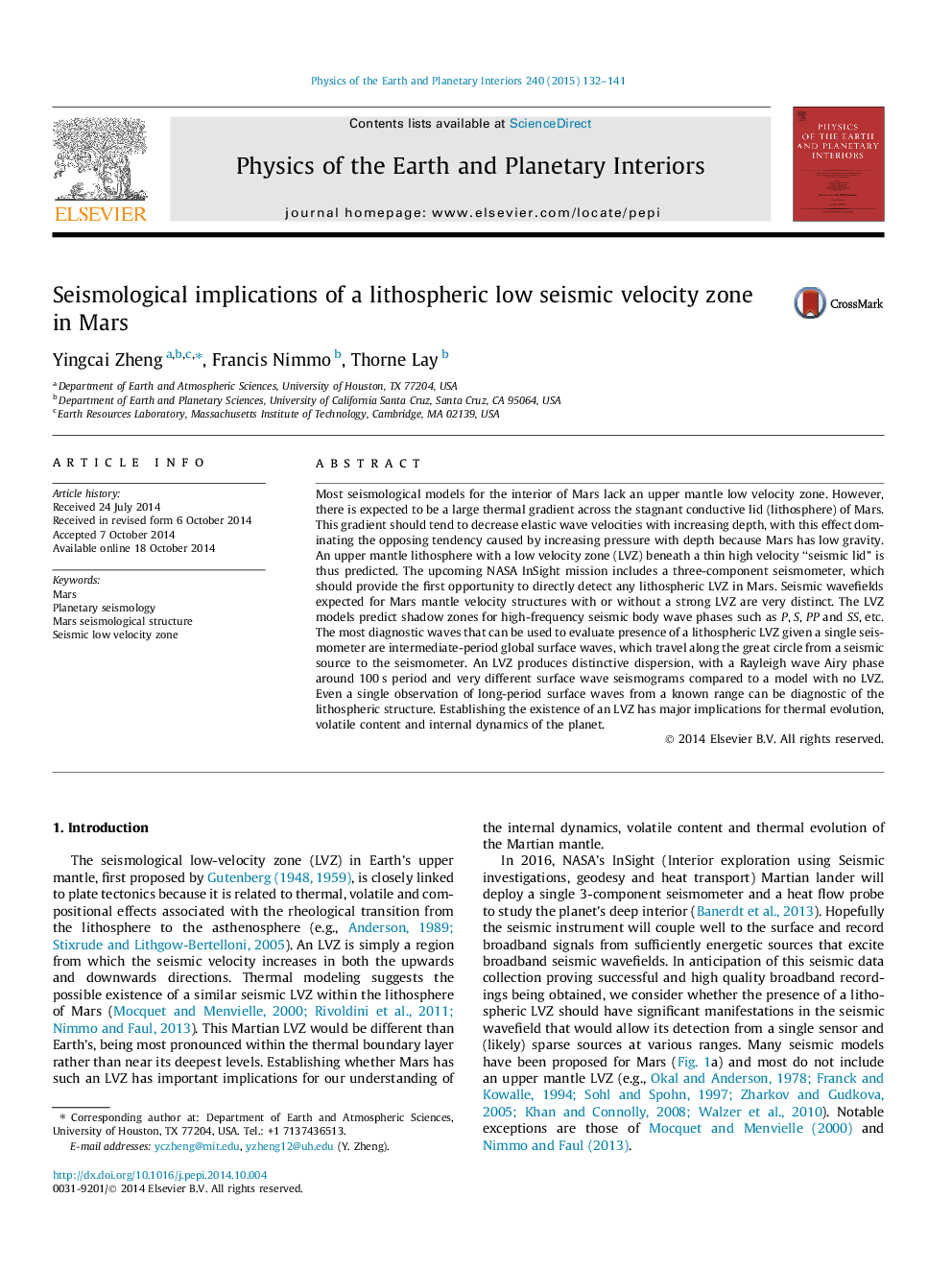| Article ID | Journal | Published Year | Pages | File Type |
|---|---|---|---|---|
| 4741545 | Physics of the Earth and Planetary Interiors | 2015 | 10 Pages |
•We predict there should be a broad seismic low velocity zone in Mars lithospheric lid.•We produced seismological models which satisfy mass, moment of inertia, tidal data, attenuation.•A single-station method to detect the LVZ using diagnostic features of Rayleigh waves is proposed.•NASA’s 2016 InSight mission provides a unique opportunity to test the existence of the LVZ.
Most seismological models for the interior of Mars lack an upper mantle low velocity zone. However, there is expected to be a large thermal gradient across the stagnant conductive lid (lithosphere) of Mars. This gradient should tend to decrease elastic wave velocities with increasing depth, with this effect dominating the opposing tendency caused by increasing pressure with depth because Mars has low gravity. An upper mantle lithosphere with a low velocity zone (LVZ) beneath a thin high velocity “seismic lid” is thus predicted. The upcoming NASA InSight mission includes a three-component seismometer, which should provide the first opportunity to directly detect any lithospheric LVZ in Mars. Seismic wavefields expected for Mars mantle velocity structures with or without a strong LVZ are very distinct. The LVZ models predict shadow zones for high-frequency seismic body wave phases such as P, S, PP and SS, etc. The most diagnostic waves that can be used to evaluate presence of a lithospheric LVZ given a single seismometer are intermediate-period global surface waves, which travel along the great circle from a seismic source to the seismometer. An LVZ produces distinctive dispersion, with a Rayleigh wave Airy phase around 100 s period and very different surface wave seismograms compared to a model with no LVZ. Even a single observation of long-period surface waves from a known range can be diagnostic of the lithospheric structure. Establishing the existence of an LVZ has major implications for thermal evolution, volatile content and internal dynamics of the planet.
